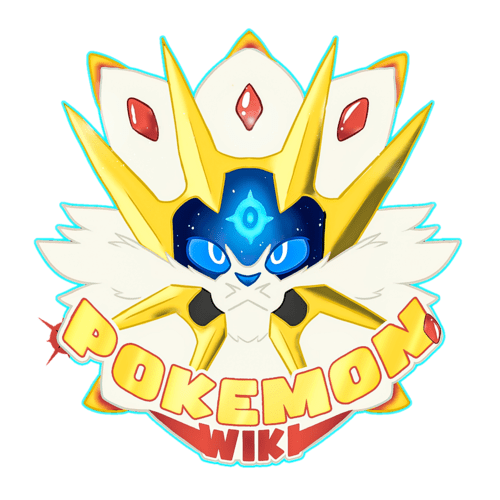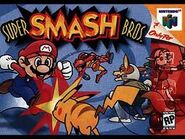(→Games) |
No edit summary |
||
| Line 1: | Line 1: | ||
| ⚫ | [[File:Tumblr_m0yatkGGsI1rrz6uyo1_500-1-.jpg|thumb|lol]]'''Generation I''' (also known as the '''Color Generation''' due to the names of the versions released) was the very first set of games introduced in the [[Pokémon|''Pokémon'' franchise]]. The games begin [[Pokémon Red and Blue|''Pokémon Red'']] and [[Pokémon Green|''Pokémon Green'']] in Japan, which are later joined with a third version ''[[Pokémon Red and Blue|Pokémon Blue]]'' and a special edition ''[[Pokémon Yellow]]''. They were released on the Game Boy while ''[[Pokémon Stadium]]'' for the Nintendo 64 in Japan. These games featured the 151 [[Pokémon]] starting with [[Bulbasaur]]. Chronologically, these games take place during the time period of the [[Generation III]] games. These games are also all located in the [[Kanto]] region. |
||
| − | {{GenerationInfoBox |
||
| − | |MainRegionName = Kanto |
||
| − | |region = Kanto |
||
| − | |JNDebut = February 27, 1996 |
||
| − | |ENDebut = September 28, 1998 |
||
| − | |#Pokémon = 151 |
||
| − | |JNGenEnd=November 21, 1999 <small>(1363 days</small>) |
||
| − | |maingames=Red, Green, Blue Yellow <small> (Japan only) </small> Red, Blue, Yellow <small> (international release)</small> |
||
| − | |image = Pokemon_Yellow_Title.png |
||
| − | |caption = Yellow |
||
| − | |battlegame = [[Pokémon Stadium]] |
||
| ⚫ | |||
== Gameplay == |
== Gameplay == |
||
Revision as of 07:14, 16 March 2012
lol
Generation I (also known as the Color Generation due to the names of the versions released) was the very first set of games introduced in the Pokémon franchise. The games begin Pokémon Red and Pokémon Green in Japan, which are later joined with a third version Pokémon Blue and a special edition Pokémon Yellow. They were released on the Game Boy while Pokémon Stadium for the Nintendo 64 in Japan. These games featured the 151 Pokémon starting with Bulbasaur. Chronologically, these games take place during the time period of the Generation III games. These games are also all located in the Kanto region.
Gameplay
The gameplay primarily consisted of the player trying to obtain all 151 Pokémon, defeating all the Gym Leaders, the Elite Four, and the Pokémon Champion while encountering other Pokémon Trainers along the way.
To catch a Pokémon, the player, who is a Pokémon Trainer, had to walk around in tall grass (or caves or use hm surf on water) to find them. When they appear, the player would get in a battle with the Pokémon where they had to lower its health by fighting the wild Pokémon with a Pokémon the player had caught. Once the Pokémon's health has been lowered, they can then capture it with a Poké Ball. However, the player can only carry six Pokémon with him. Once the player caught a seventh Pokémon, it would be transferred to a Pokémon storage system. Players can switch the six Pokémon they carry with other Pokémon they have caught by accessing the Pokémon storage system, which contains 12 "boxes" that each hold 20 Pokémon.
Each Pokémon has their own "stats", which consisted of Attack, Defense, Speed, Special, and HP. These stats increase when the Pokémon gains a "level". The lowest level a Pokémon can be is level 1, while the highest is level 100. Pokémon also have "moves", which can be used to attack another Pokémon or to heal oneself. In total, there are 165 moves in Generation I, though a Pokémon can only have four moves and will have to forget a move to learn a new one.
Pokémon also come in different elemental types. There are 15 different elemental types of Pokémon, consisting of Bug, Dragon, Electric, Fighting, Fire, Flying, Ghost, Grass, Ground, Ice, Normal, Poison, Psychic, Rock, and Water. Each element has its own weakness, such as Fire Pokémon being weak against Water Pokémon, and reversely strengths, such as Water Pokémon being strong against Fire Pokémon. Pokémon receive less damage from and deal more damage to elements they are strong against, while on the other hand dealing less damage to and taking more damage from elements they are weak against, thus encouraging the player to keep a diverse selection of Pokémon with him to counter various types of enemy Pokémon effectively.
Some Pokémon can evolve into another Pokémon. This can happen when they reach a certain level, are traded with another character or player, or are given an evolutionary stone. When a Pokémon evolves, they are given better stats and may also change types.
The player must travel across Kanto and defeat the eight Gym Leaders at their Gyms, earning a Badge corresponding with that Gym. Each Gym specializes in a type of Pokémon, resulting in certain types of Pokémon being effective in certain gyms, while other types of Pokémon are weak in certain gyms. After defeating the eight Gym Leaders, the player progresses to the Elite Four, where he fights the four best trainers in the entire region. After defeating them, the player must then defeat the Pokémon Champion, which will result in the player becoming the new Pokémon Champion.
Players can also trade Pokémon with or fight against other players through a Game Link Cable. Some Pokémon have to be traded so that they can evolve.
Starter Pokémon
The player can choose one of three Starter Pokémon at the beginning of the game. The choices are: Bulbasaur (Grass), Squirtle (Water), and Charmander (Fire)
However, in Pokémon Yellow, the player had only Pikachu to choose as a starter, while the rival always chooses Eevee, which evolves into either Vaporeon, Jolteon or Flareon depending on the results in the battles with him at Prof. Oak's lab and at route 22.
Gym Leaders and the Elite Four
Generation I introduced a unique set of Gym Leaders and the Elite Four. All of these trainers specialized in a specific type of Pokémon and are key to progressing through the game. They all reappear in Generation II's Pokémon Gold, Silver and Crystal, Generation III's Pokémon FireRed and LeafGreen and Generation IV's Pokémon HeartGold and SoulSilver.
Gym Leaders
| Leader Name | Type | HM Usable After Defeat |
Place |
|---|---|---|---|
| Brock | Rock | Flash | Pewter City |
| Misty | Water | Cut | Cerulean City |
| Lt. Surge | Electric | Fly | Vermilion City |
| Erika | Grass | Strength | Celadon City |
| Koga | Poison | Surf | Fuchsia City |
| Sabrina | Psychic | None | Saffron City |
| Blaine | Fire | None | Cinnabar City |
| Giovanni | Ground | None | Viridian City |
Elite Four
| Member | Type |
|---|---|
| Lorelei | Ice |
| Bruno | Fighting |
| Agatha | Ghost |
| Lance | Dragon |
Pokémon Champion
The Pokémon Champion in Generation I is Blue, the player's rival.
Pokémon
Games
Trivia
- Pokémon Green wasn't released internationally and was only released in Japan.
- Dragonite's horn wasn't added until Generation II
- Generation 1 has the least number of legendaries.
- Generation 1 is the only Generation not to introduce a dual Water/Ground type Poke'mon, as well the only Generation not to have a female player.
Template:GenerationNav







